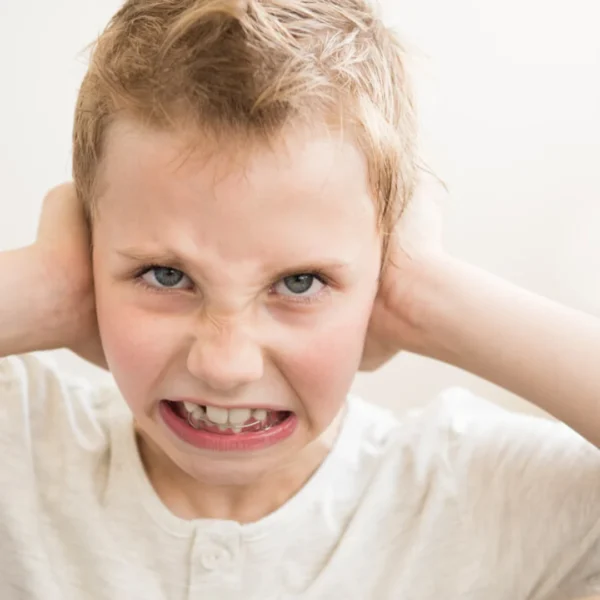Most parents first encounter temper tantrums during the so-called “terrible twos.” During a tantrum, it’s not unusual for a child to scream, cry, roll on the floor, or even throw objects in frustration. While it can be overwhelming, it’s their way of expressing feelings in the only way they know.
That said, physical aggression can also emerge around this age. Children hitting their parents may seem shocking and disheartening at first, but these behaviors are quite common at this stage of development.
However, without correction and proper guidance, these angry outbursts may persist beyond the toddler years and intensify over time. That’s why parents must learn how to discipline kids to address these behaviors early in a child’s life.
Understanding Your Child’s Behavior Problems and Aggression

Early childhood is naturally filled with challenges and growing pains, so parents need to pause and ask themselves a few key questions before labeling a child’s behavior as a “problem.”
- How often does this behavior happen?
- How intense is it?
- Is it age-appropriate, or is it escalating beyond what’s typical?
In most cases, a child’s anger is his natural response to disappointment. Much like a bull in a china shop, young children often fling toys and sometimes their bodies toward the nearest target whenever they feel angry, frustrated, or overwhelmed. While this behavior looks wild on the outside, it’s quite normal for a healthy, growing child.
The main reason is simple: at this stage, children haven’t yet developed the ability to reason, compromise, or express their feelings verbally in the way adults can. They’re still learning how to cope with big emotions and unmet needs, often through trial and error.
From a child’s point of view, his behavior doesn’t feel “wrong.” Young children aren’t trying to be difficult; they’re simply reacting to the world around them the best way they know how. What they truly need is guidance—gentle, consistent teaching that helps them find more appropriate and self-controlled ways to meet their needs.
To truly support our children, parents and family members must look beneath the surface of their behavior. That means understanding the root causes and, just as importantly, modeling self-discipline ourselves. When we respond with calm, consistency, and clarity, we create the structure they need to become self-disciplined, too, eventually.
Risk Factors and Early Signs of Behavioral Problems Due to Neurological and Developmental Disorders

“Are anger issues genetic or learned?” is a question many parents ask when trying to make sense of their child’s emotional outbursts. Science tells us it can be both.
Multiple studies have shown that genetics can predispose a child to stronger emotional reactivity. This is often due to heightened neurological responses to frustration or stress.
For example, a systematic review published in Nature found that genetic factors account for 50–65% of the risk for high aggression in children. Variations in certain genes, such as MAOA, have been linked to early-onset aggressive behaviors and difficulty with emotional control.
Simply put, some children are born with what we might call a “fiery” temperament. They tend to be more sensitive, more reactive, and quicker to anger. But this doesn’t mean they’re bound to have anger issues for life. It simply means they require more support in replacing impulsive outbursts with thoughtful, constructive responses.
It’s also important to consider neurological developmental disorders, such as autism spectrum disorder (ASD) and attention deficit hyperactivity disorder (ADHD). Children with these conditions often experience difficulty with emotional regulation and impulse control, which can lead to increased frustration and aggression, especially in situations that overwhelm their coping abilities.
Oppositional Defiant Disorder and Conduct Disorder

With consistent discipline and guidance, you can tame your child’s aggressive behavior over time. Tantrums become less frequent as children begin to understand that there are healthier ways to cope beyond yelling, hitting, or throwing things. For most kids, these angry outbursts fade during the preschool years, especially as they start school and develop social skills.
However, in children with Oppositional Defiant Disorder (ODD), those explosive tantrums may persist well beyond what’s considered developmentally typical. These children often display ongoing hostility and defiance toward authority figures such as parents, teachers, and other caregivers. While ODD doesn’t always lead to physical aggression, some children do become physically aggressive when their frustration escalates.
When a child with ODD begins to show ongoing physical aggression, cruelty, or overt aggression, it may be a sign of a more serious condition—Conduct Disorder (CD). CD includes all the hallmark behaviors of ODD but takes things further. Children with CD frequently violate social norms and the rights of others in more dangerous and deliberate ways.
How to Minimize Anger Outbursts and Hostile Aggression in Early Childhood

When your child misbehaves, you don’t have to resort to spanking or shouting. All degrees of shouting and spanking only give children negative attention, and this type of punishment is also often the earliest experience a child has with physical violence.
Many parents fail to realize that most children often don’t understand the emotional or physical toll of their actions until it’s clearly explained to them. To effectively manage your child’s minor misbehavior, you need to use positive strategies as suggested below and model understanding and care regardless of how difficult your child’s behavior may be.
Teach Children Anger Management Skills and Emotional Regulation
Start by helping your child recognize how aggressive behaviors, such as hitting, biting, or throwing affect others.
💭 “When you hit your brother, it hurts his body and feelings. Imagine how you’d feel if other children did that to you, too.”
Use real-life situations to make your point. For example, if your child throws a toy you saved up to buy, explain how that makes you feel. This way, children learn to connect their actions to real consequences.
When your child begins to act out aggressively, interrupt the behavior and redirect them toward healthier choices. Teach simple, actionable strategies they can use when they feel upset:
- “Count to 10 when you feel like hitting.”
- “Let’s take a break until we’re both calm.”
Then, demonstrate the good behavior you’d like to see. Children are incredibly observant; if you model self-control and problem-solving, they’re far more likely to mirror it. At the same time, show them what it looks like to value things and people alike.
Promote Positive Reinforcement for Appropriate Behavior and Show Consistent Consequences for Aggressive Behaviors
Whenever your child handles anger positively, acknowledge it with specific praise. Vague compliments like “Good job” are fine, but targeted praise is far more effective.
💭 “I’m proud of you for telling me you were upset instead of throwing something. That shows you’re learning to stay calm.”
Positive reinforcement builds self-esteem and strengthens the behavior you want to see repeated.
While praise is powerful, boundaries are equally important. Children need to understand that aggressive behavior, no matter how emotional the moment, has consequences.
But remember: don’t use aggression to stop aggression. Yelling, spanking, or hitting sends the message that violence is acceptable in moments of frustration. Instead:
1. Stay calm and firm.
2. Reprimand the behavior clearly. 💭 “It’s not okay to hit, even when you’re mad.”
3. Offer a better choice: 💭 “Next time, tell me you’re upset with your words.”
If your child’s tantrums continue, apply a consequence such as a time-out, loss of privilege, or removal from the situation.
Consistency is key. When your child knows what to expect every time they lash out, they begin to internalize the boundaries you’re setting.
Nip the Bud: Angry Kids Could Grow Into Adults with Anger Issues and Conduct Disorder
If your child’s aggression becomes frequent, intense, or persists beyond what is developmentally expected, don’t wait and hope they’ll grow out of it.
Early intervention is critical.
- A child psychologist or behavioral therapist can assess underlying causes and offer effective treatment plans.
- Parent coaching or family counseling can provide strategies tailored to your child’s specific needs.
- Conditions like Oppositional Defiant Disorder (ODD), ADHD, or autism spectrum disorder may be contributing factors, and early diagnosis leads to better outcomes.
Overt aggression at any age should be taken seriously. It’s not just a “phase” to be brushed off.

